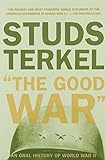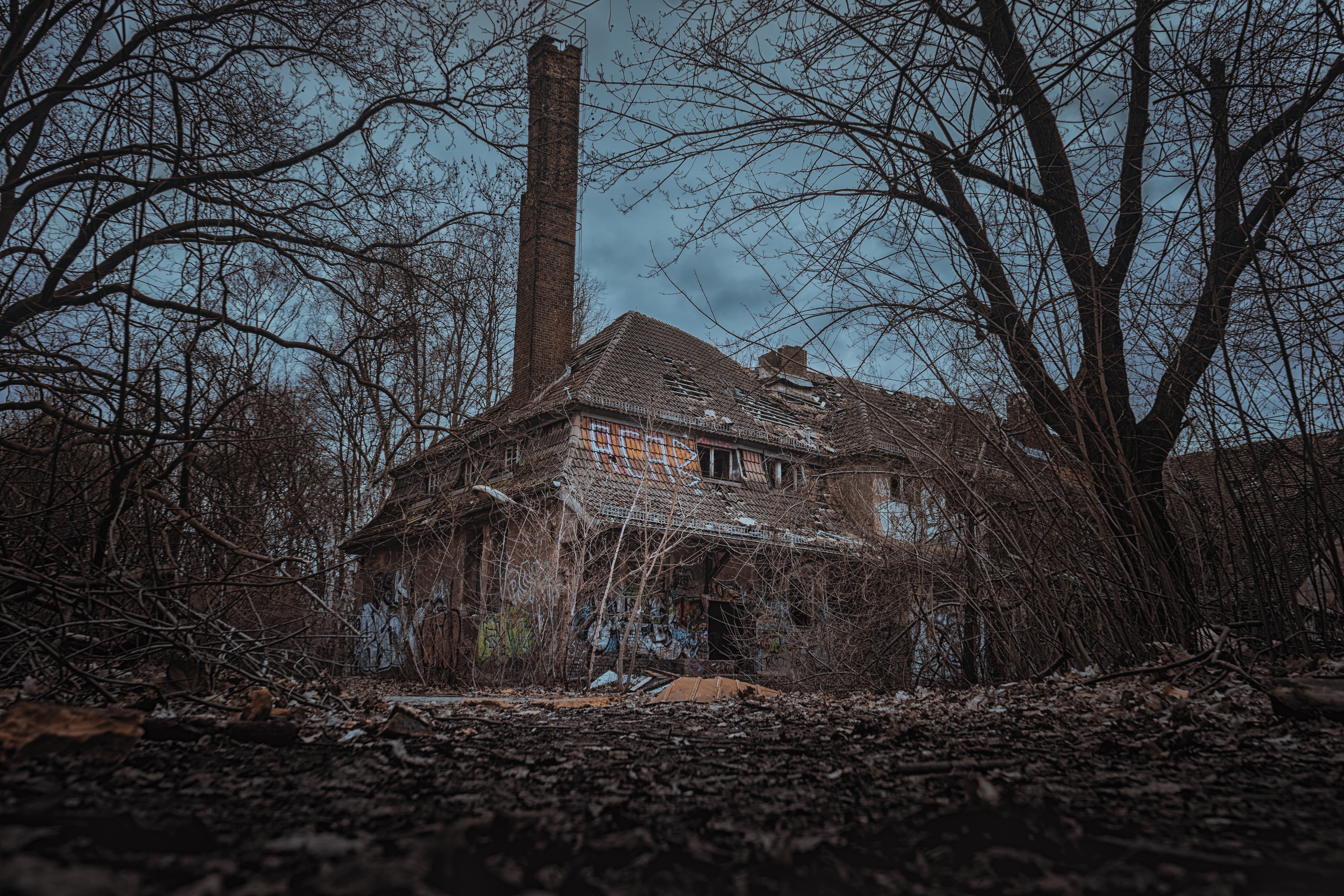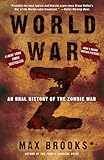 1.
1.
With the release of George Romero’s 1968 movie Night of the Living Dead, zombies became the monster of choice for those wishing to blend in a little social commentary with their horror. Ever since then, people have found zombies for the “thinking man” everywhere, from the hit movie 28 Days Later to obscure horror novels like Dying to Live: A Novel of Life Among the Undead by Kim Paffenroth or Pariah by Bob Fingerman. Even Pride and Prejudice and Zombies has a bit of an edge to it, according to its author: “The people in Austen’s books are kind of like zombies. No matter what’s going on around them in the world, they live in this bubble of privilege.”
Of course, after 50 years, the zombie genre has hit the creative doldrums. Instead of covering new thematic territory, zombies simply became more physically frightening – bloodier, gorier, faster. And the stories in which they starred became more mindless, content only to revisit the themes of Romero’s Living Dead series. Okay, people become selfish and shortsighted in a crisis; okay, zombies can stand-in for mindless consumerism, ignorance, or ideological conformity. Is that really all the zombie genre has to offer?
In 2006, Max Brooks turned the zombie story on its ear with a supreme act of genre-bending. Because most zombie stories had to be, well, stories, they necessarily focused on a single person or a small group of survivors. But Brooks wrote World War Z as an oral history, which allowed him to form a kind of pointillist view of the “zombie war” from almost two dozen points of view. Thus we see the war through the eyes of a soldier who fought in every major battle in North America; of the Chinese doctor who discovered Patient Zero; of two unlikely heroes who survived the war in Japan even after the islands had been evacuated. And instead of focusing on how crisis brings out the worst in individuals, though there is plenty of that, Brooks mostly concerns himself with big picture: the failure of governments and societies. In that sense, World War Z sets out to do exactly what oral histories of the end of the world have always done.
2.
According to Brooks, Studs Terkel’s 1984 book The Good War “influenced me more than anything… When I sat down to write World War Z, I wanted it to be in the vein of an oral history.” In terms of narrative framing, Brooks follows Terkel almost exactly; The Good War is basically a series of interviews with people who fought in, or lived through, World War II.
 The Good War is as much biting social criticism as a mere compilation of conversations. On the very first page of the book, Terkel lobs a rhetorical grenade right at the reader: “the disrememberance of World War II,” he writes, “is as disturbingly profound as the forgettery of the Great Depression.” It’s an odd sentiment to read, especially nowadays. After all, we live in a post-Saving Private Ryan, post-Band of Brothers world, where bookstores have separate World War II sections and the History Channel has at least two hours of World War II programming a day. Surely no one could “disremember” World War II.
The Good War is as much biting social criticism as a mere compilation of conversations. On the very first page of the book, Terkel lobs a rhetorical grenade right at the reader: “the disrememberance of World War II,” he writes, “is as disturbingly profound as the forgettery of the Great Depression.” It’s an odd sentiment to read, especially nowadays. After all, we live in a post-Saving Private Ryan, post-Band of Brothers world, where bookstores have separate World War II sections and the History Channel has at least two hours of World War II programming a day. Surely no one could “disremember” World War II.
About 100 pages and a dozen interviews into the book, however, the reader begins to see what Terkel means. For most, World War II was the adventure of their lives and an “epochal victory” over evil. But many also remember their feelings of ambivalence, helplessness, and confusion in the face of a world-spanning conflict. More than one person remarks that everything after the war “is anticlimactic;” others, like the Italian immigrant who said that the war “obliterated our culture and made us Americans,” are downright regretful.
Although The Good War is a strongly antiwar book, Terkel shrewdly lets his interviewees make the point for him. There are, of course, the stereotypical antiwar voices: the disillusioned veteran, the vaguely contemptuous academic, the shallow celebrity. But Terkel manages to find people whose insistence that “people in America do not know what war is” seems much less rote. An orderly in a burn ward who describes how she “had to keep the skin wet with these moist saline packs. We would wind yards and yards of this wet pack around people. That’s what war is.” An admiral who insists that “the twisted memory of [World War II] encourages the men of my generation to be willing, almost eager, to use military force anywhere in the world.” An otherwise happy veteran who closes the book by saying, “I hope I can die of old age, before the world starts the war.” And scariest of all, the congressman, Hamilton Fish, who founded the precursor to the House Un-American Activities Commission and who insisted that the United States would never use the bomb solely because “we are a God-fearing country.”
The Good War is a record of profound change, as “a country psychically as well as geographically isolated had become, with the suddenness of a blitzkreig, engaged with distant troubles. And close-at-hand triumphs.” But it also shows the variety of opinions that people can hold about something that seems, at first glance, a simple struggle between good and evil. It is a necessary counterpoint to cloying, chest-thumping, action-packed narratives of war, as Terkel intended it to be. And, by coming out with a strong antiwar message during one of the tensest periods of the Cold War — just after Soviet fighters shot down Korean Air Flight 007 and both sides deployed new nuclear missiles throughout Europe — it showed that something as simple as a collection of interviews could say as much about its present day as it did about the past.
3.
Besides The Good War, 1984 saw the publication of Whitley Strieber and James Kunetka’s Warday, a documentary-style oral history that takes place five years after a 36-minute nuclear exchange between the United States and the Soviet Union.
(First things first: yes, this is the same Whitley Strieber who wrote the alien abduction book Communion and the environmental sci-fi novel The Coming Global Superstorm, which inspired the movie The Day After Tomorrow. But the Whitley Strieber of Warday still has a few years to go before all of this.)
Warday matches World War Z even more closely in terms of tone, themes, and narrative techniques. Strieber and Kunetka imagine their way into a United States devastated by a “limited” nuclear exchange — one that still managed to vaporize San Antonio and Washington, D.C., and render New York, New Jersey, and most of the Midwest uninhabitable. The bombs themselves are horrific enough: at one point, a superheated tidal wave from an offshore nuclear blast inundates the New York subway, and the authors can hear the screams of the drowning cut off by the “nasty bellow of water.” But even worse is the aftermath.
As they travel around the country, Strieber and Kunetka document the dozens of ways in which a nation that once prided itself on individual liberties and a stubborn, can-do attitude has turned into a collection of petty fiefdoms whose laws “are an affront to the very memory of the Bill of Rights.” The government requires doctors to turn away patients who have been exposed to enough radiation to significantly shorten their life expectancy. The relatively untouched parts of the country now refuse to accept “illegals” from others — a trainload of orphans from Philadelphia are turned back at the Georgia border, for example, and when the authors smuggle themselves into California, they are chased out at gunpoint by immigration police. And with perfect journalistic aim, the authors document the death of American self-confidence in a series of fictionalized polls that ask questions like “Do you think that the destiny of this country is presently in the hands of other nations?” and “Do you believe that the federal government should abandon the War Zones permanently?”
As Strieber told People magazine in 1984, “We did not want to write a book about explosions. We wanted to take people into life beyond The Day After — to wake them up in the New World of the years after.” And his and Kunetka’s decision to make Warday a cautionary tale about nuclear war without focusing on the warfare itself makes it a successful cri de coeur. “Modern nuclear war,” they write, “means life being replaced by black, empty space” — both physically and spiritually. Nuclear weapons might destroy our homes and lives, they suggest, but only we can decide to abandon our principles in the face of fear, ignorance, and a permanent state of pessimism.
4.
Chances are, however, that you’ve never heard of Warday. Although the book spent six months on the New York Times bestseller list and earned Strieber and Kunetka the equivalent of a million-dollar advance today, it has been out of print since 1985. It isn’t that the book lacked timeliness; 1984 meant plenty of post-apocalyptic pop culture, including Mad Max the television shows The Day After in the United States and Threads in the UK. Yet after that brief burst of success, people put down Warday and never really picked it back up.
Maybe the book bit a little too hard. It’s shocking, for example, to hear a Canadian traveler joke about the “Uncle Sam Jump” (the postwar American equivalent of Montezuma’s Revenge), or to hear about American nannies considered to be a status symbol by wealthy foreign businessmen — in other words, to see the United States treated like a developing country. More importantly, Warday portrays the American Republic — “the last great experiment for promoting human happiness,” according to George Washington — as something extremely fragile, and not easily restored once lost. And all this at the height of the Cold War, when Ronald Reagan told Americans that no rational human being would prefer authoritarianism to democracy.
Warday is also relentlessly grim. The fact that World War Z is about zombies means that it flirts with silliness and the adolescent flair for ultra-violence against things that aren’t quite human beings — see, for example, the helicopter pilot who uses his rotor blades as a giant zombie buzzsaw during the Battle of Yonkers. And both The Good War and World War Z end with American victories, which at least balances all of the loose ends, postwar traumas, and moral gray areas in both books. In the end, a happy ending and plenty of flag-waving patriotism makes the bitter pill of social commentary go down much easier. With Warday, there are no such spoonfuls of sugar. We’re left knowing only that the authors have succeeded in their journey, and arrive home simply to endure the “epidemic of shortened lives.” Strieber and Kunetka are only the historical equivalent of a bucket brigade, passing on knowledge of their post-apocalyptic world while knowing that in the end it helps no one.
Still, if Warday sails too close to the Scylla of moralizing heavy-handedness, at least it avoids the Charybdis of slapdash social commentary that permeates World War Z. Granted, a zombie apocalypse can be a metaphor for many things, but Brooks never quite seems to know exactly what his stands for. Right off the bat, he tacks leftward, lamenting the fact that lax FDA regulation contributed to the panic and sneering along with the reader at the official who asks, “Can you ever ‘solve’ disease, unemployment, war, or any other societal herpes?” (Just in case anyone doubts Brooks’s political sympathies, the stand-in for the Bush administration ends the book literally shoveling shit). But then Brooks finds a savior in authority, tradition, and centralized planning: Israel becomes a police state and survives relatively unscathed, the Queen inspires a nation by refusing to leave Windsor Palace, Nelson Mandela (who goes unnamed) saves South Africa from being overrun, and, most of all, a charismatic American president announces his decision to take back the world aboard an aircraft carrier.
So are we supposed to hate government, or embrace it as our last, best hope? Are individuals and individual liberties important, or do we need Great Men (and Women) — aided, of course, by a competent bureaucracy — to compel us toward safety and salvation? What is its message about violence, when it portrays the mass “killing” of zombies in painstaking, almost loving detail? And does the fact that World War Z is a monster story mean that we cannot take it seriously at all, even though it clearly invites us to do so?
Obviously, the World War Z references a variety of Bush-era woes. And Brooks’s reviewers draw attention to World War Z’s “parallels” and “metaphors” and “expressly political and socioeconomic material,” but they never identify what the book is supposed to mean. What purpose, except for the thrill of recognition, do all of these modern-day references accomplish? They don’t add up to an overarching moral point, except to get us even angrier about “incompetence in high places and lack of preparedness” — which, incidentally, is exactly what George Romero tried to tell us in the 1960s and 1970s.
This is not to say that World War Z is a shallow book by any means. It has scary moments and exhilarating ones, violence and poignancy, and quite a few colorful personalities (though Brooks resorts to stereotypes a bit too often when it comes to international characters). Still, it’s a bit disingenuous to claim, as the book’s dust jacket does, that Brooks does for zombies what Studs Terkel did for World War II. Yes, his choice of narrative frame refreshes a genre that had already entered its baroque phase. But World War Z never quite manages the same level of moral pique as The Good War and Warday; it is so constrained by its undead subject matter that it can only gesture at modern-day relevance before falling back on the same shopworn themes. Although it has more brains than the average zombie story, it still doesn’t have much of a heart.
Image credit: Pexels/Pixabay.











